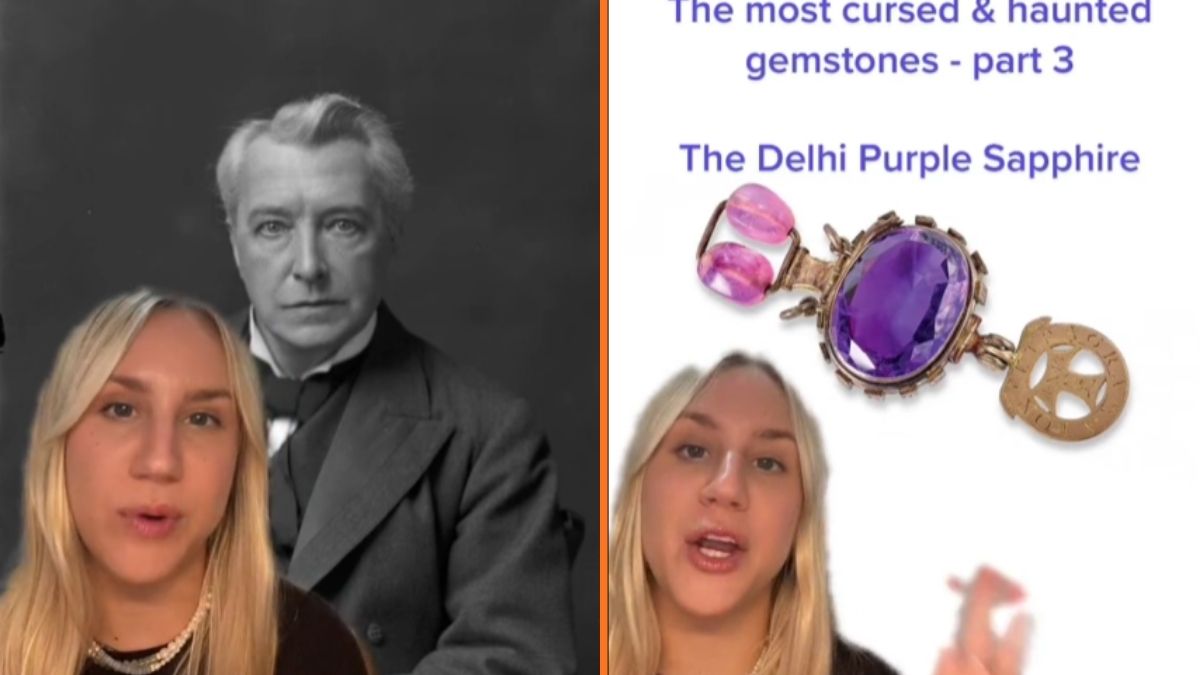
A purple stone sits in a glass case at London’s Natural History Museum. It looks plain and unremarkable, but the stories about this gem are anything but ordinary. For more than a hundred years, people who owned it said it ruined their lives. The Delhi Purple Sapphire is not actually a sapphire. It is an amethyst that was supposedly stolen from a temple in Kanpur, India back in 1857.
A British soldier named Colonel W. Ferris took it from the Temple of Indra during a violent uprising against British rule. After bringing the stone home to England, Ferris got sick and lost almost all his money. His son later got the gem and had the same terrible luck. Things got so bad that the son gave it to a friend, who ended up taking his own life, as per India Times.
A British writer named Edward Heron-Allen purchased the stone in 1890 and immediately started having problems. He tried giving it away to his friends, hoping to get rid of it for good, but everyone gave it back after bad things started happening to them too. One woman who got the stone as a gift was a professional singer, and she completely lost her voice after wearing it and could never sing again. Heron-Allen got so frustrated that he tossed the gem into a canal in London. But three months later, a jeweler brought it back to him after buying it from someone who found it at the bottom of the canal.
Maybe the whole curse was just made up
These days, some researchers think Heron-Allen invented the entire curse story. Museum experts believe he made it all up to get people interested in his book, The Purple Sapphire, which came out in 1921 under a different name. The book tells almost the same story as his letter about the real stone. Researchers also noticed that his letter got some facts wrong, like the year the Indian rebellion happened.
Even though the curse might be fake, weird things kept happening around the stone in recent years. A museum worker named John Whittaker had to drive the gem to an event in 2000, and he ran into the worst thunderstorm he had ever seen. His wife yelled at him to throw the cursed stone out of the car.
After that, every time Whittaker had to go to another event with the stone, he got really sick. He said it might just be bad luck, though. The museum keeps the stone secure, much like other allegedly cursed objects kept behind glass that visitors come to see.
Heron-Allen tried everything to stop the curse. He put the stone in a silver ring shaped like a snake with two carved beetles and symbols from astrology. But when his baby daughter was born in 1904, he got really scared that the curse might hurt her. He put the gem inside seven different boxes and locked them all up in a bank vault. He wrote a note saying nobody could open the boxes until 33 years after he died. His daughter ended up giving it to the museum, and that is where it stays now.
The stone is about the size of a large marble and does not look special at all. Nobody really knows if the Delhi Purple Sapphire has real curse powers or if it just has a good story behind it. The museum workers think it is probably just an old tale from the Victorian era and nothing supernatural. But people still love hearing about it, just like they enjoy stories of cursed objects bringing death to those who encounter them from different parts of the world.







